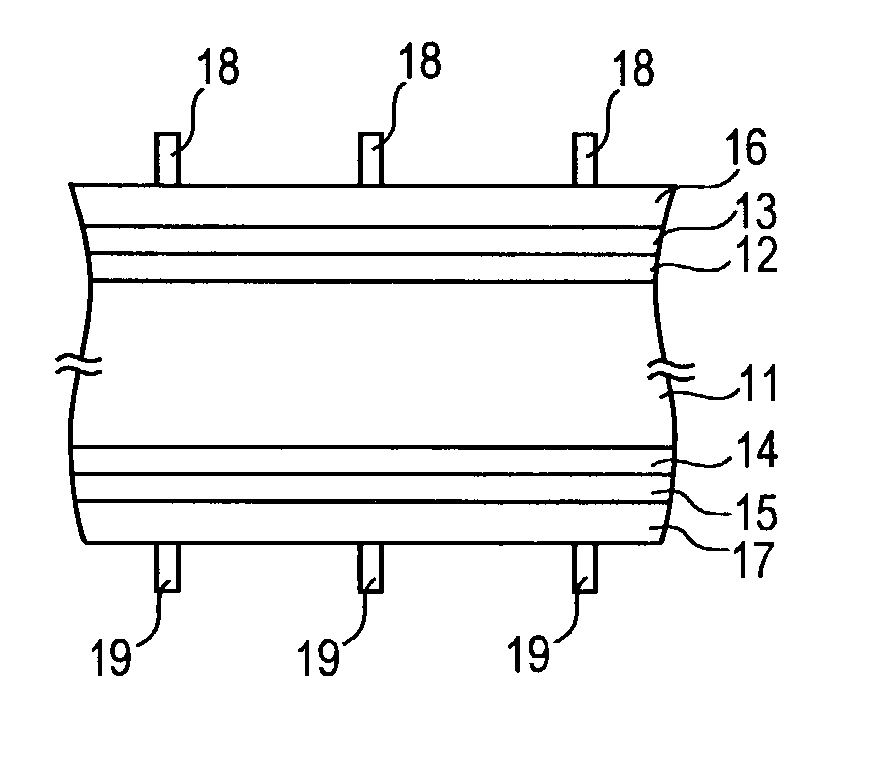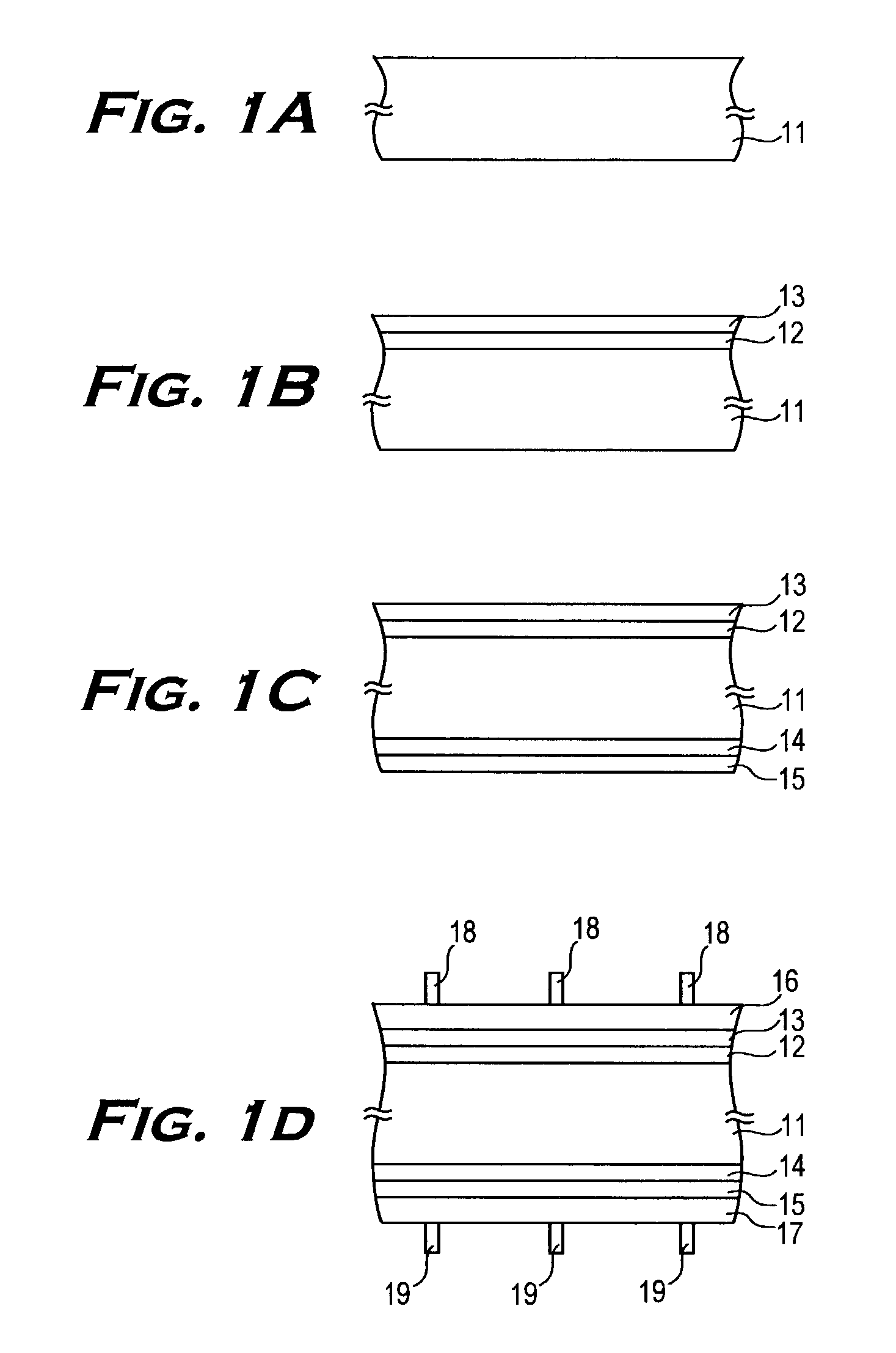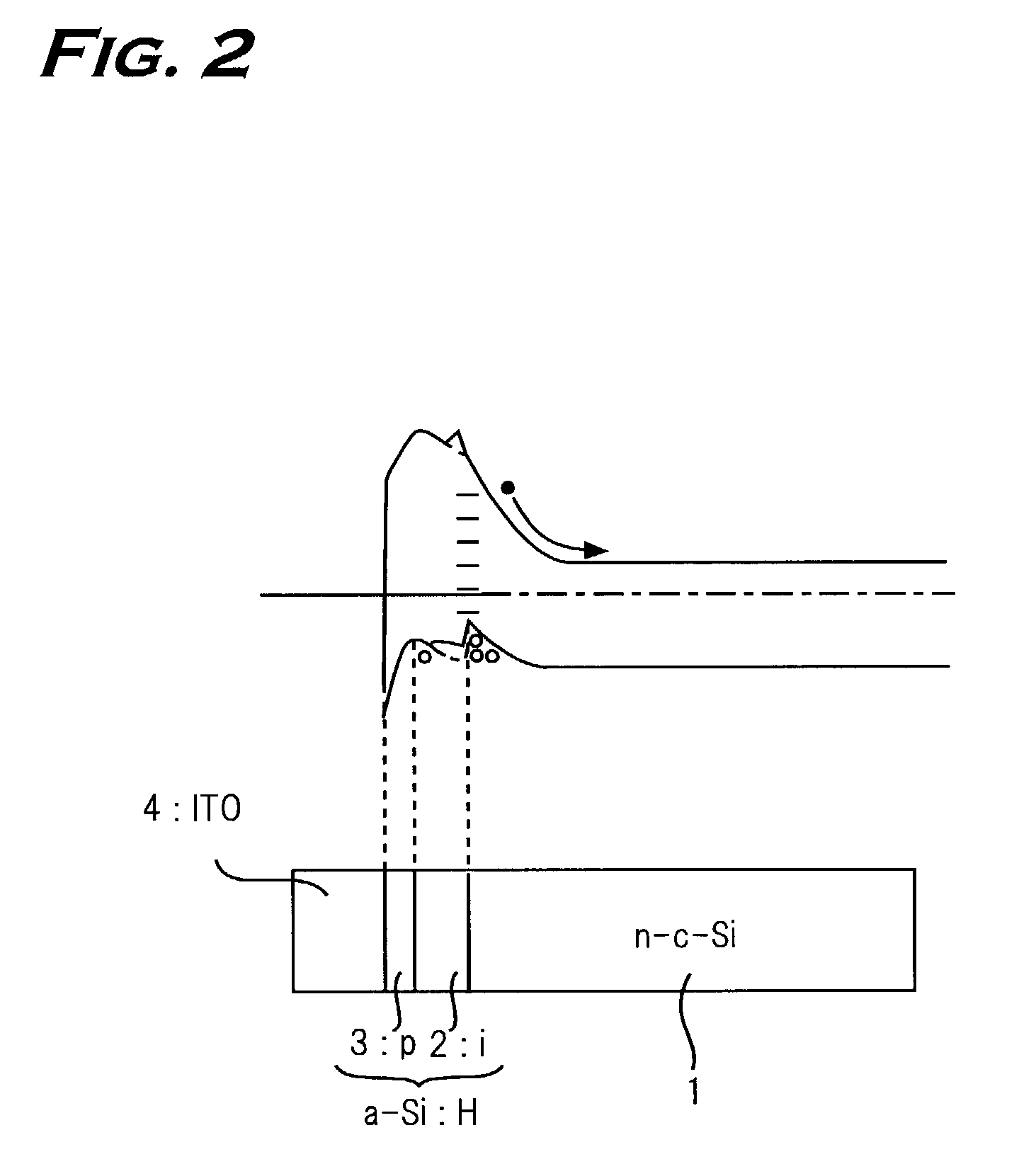Photovoltaic device and manufacturing method thereof
a photovoltaic device and manufacturing method technology, applied in the direction of sustainable manufacturing/processing, instruments, final product manufacturing, etc., can solve the problems of adversely affecting the p-n junction characteristics or bsf effect, and it is difficult to completely remove water or organic matter from the surface of the substra
- Summary
- Abstract
- Description
- Claims
- Application Information
AI Technical Summary
Benefits of technology
Problems solved by technology
Method used
Image
Examples
first embodiment
[0034] (First Embodiment)
[0035] FIGS. 1A to 1D are cross sectional views illustrating manufacturing processes of a photovoltaic device according to the first embodiment.
[0036] A single crystalline silicon substrate or a polycrystalline silicon substrate may be used as a crystalline semiconductor substrate. In this embodiment, an n-type single crystalline substrate 11 of resistivity not more than 5 .OMEGA.cm and 300 .mu.m in thickness is used. Both front and rear surfaces of this single crystalline silicon substrate 11 are textured by anisotropic etching using alkaline solution such as sodium hydroxide solution or potassium hydroxide solution.
[0037] The single crystalline silicon substrate 11 is cleaned and put into a vacuum chamber to be heated up to not more than 200 degrees centigrade so that water attached to the front surface of the substrate can be removed to the utmost. In this embodiment, the substrate is heated up to 170 degrees centigrade.
[0038] Next, hydrogen gas (H.sub.2)...
second embodiment
[0056] (Second Embodiment)
[0057] Next, explanations are made of the second embodiment. A single crystalline silicon substrate is cleaned and put into a vacuum chamber to be heated up to not more than 200 degrees centigrade so that water attached to a front surface of the substrate can be removed to the utmost. In this embodiment, the substrate is heated up to 170 degrees centigrade.
[0058] Next, hydrogen gas (H.sub.2) is introduced and the substrate is exposed to plasma discharge to clean the surface thereof. Then, hydrogen gas (H.sub.2), diborane gas (B.sub.2H.sub.6), silane gas (SiH.sub.4) are introduced and the substrate is exposed to plasma discharge to laminate on the front surface of the substrate a first amorphous silicon layer {circle over (1)} of thickness about 1 nm doped with a slightly p-type impurity of low density so that boron is introduced in the vicinity of an interface. After that, a p-n junction is formed by laminating an i-type amorphous silicon layer {circle over...
third embodiment
[0062] (Third Embodiment)
[0063] Now explanations are made of the third embodiment. A single crystalline silicon substrate is cleaned and put into a vacuum chamber to be heated up to not more than 200 degrees centigrade so that water attached to a front surface of the substrate can be removed to the utmost. In this embodiment, the substrate is heated up to 170 degrees centigrade.
[0064] Next, hydrogen gas (H.sub.2) is introduced and the substrate is exposed to plasma discharge to clean the surface thereof. Hydrogen gas (H.sub.2) and diborane gas (B.sub.ZH.sub.6) are introduced, and the substrate is exposed to said gases. Diborane gas (B.sub.2H.sub.6) is decomposed on and attaches to the heated surface of the substrate so that boron can be introduced in an interface. The substrate is exposed under the condition of substrate temperature of 170 degrees centigrade, density and flow rate of diborane gas (B.sub.2H.sub.6) 2% and 1000 sccm respectively, pressure 40 Pa and treating time 1-600 ...
PUM
| Property | Measurement | Unit |
|---|---|---|
| Digital information | aaaaa | aaaaa |
| Digital information | aaaaa | aaaaa |
| Temperature | aaaaa | aaaaa |
Abstract
Description
Claims
Application Information
 Login to View More
Login to View More - R&D
- Intellectual Property
- Life Sciences
- Materials
- Tech Scout
- Unparalleled Data Quality
- Higher Quality Content
- 60% Fewer Hallucinations
Browse by: Latest US Patents, China's latest patents, Technical Efficacy Thesaurus, Application Domain, Technology Topic, Popular Technical Reports.
© 2025 PatSnap. All rights reserved.Legal|Privacy policy|Modern Slavery Act Transparency Statement|Sitemap|About US| Contact US: help@patsnap.com



